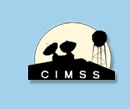


Claudia Stubenrauch
Related tar files:
anomaly_isccp.tar
anomaly_isccp9304.tar
anomaly_patha.tar
anomaly_pathb.tar
anomaly_HIRS.tar
pathb_hirs.tar
Please note: please read anomaly.pdf to understand the analyses Claudia has done.
Global anomalies as well as correlation maps (and some mean cloud variables for the 12 months) are presented in the different tar files:
anomaly_isccp.tar: Tcld, pcld, CA, ECA, HCA, MCA and LCA are analyzed for the whole data period (1983-2004) and for (6/1987-5/1995) to match TOVS PathB data
anomaly_isccp9304.tar: same analysis of ISCCP for period with 4 geostationary satellites
anomaly_patha.tar: pcld and ECA of TOVS PathA for 1985-2001 and for 6/1987-5/1995
anomaly_pathb.tar: Tcld, pcld, CA, ECA, HCA, MCA and LCA of TOVS PathB for 6/1987-5/1995
In addition, land and ocean trends are analyzed separately (_lo)
anomaly_HIRS.tar: CA, HCA, MCA and LCA of UW HIRS for 1982-2001 and for 6/1987-5/1995
anomaly_surf8795.tar: CA and LCA for 6/1987-5/1995, provided by Joel Norris from surface observations
pathb_hirs.tar: differences between TOVS PathB and HIRS HCA and LCA at 1 deg resolution
From these datasets my conclusions are so far:
1) The slight decreasing CA of ISCCP can be explained by 3 geostationary satellites
before 1993 and 4 afterwards. A similar analysis has been undertaken by Garret Campbell
in regard to satellite viewing angle, with more geostationary satellites leading to
smaller viewing angles and slightly smaller CA.
2) The slight increase of TOVS PathB LCA is linked to the tropics, but the reasons are still unclear; no other dataset shows this.
3) The increase since 1995 of UW HIRS HCA is linked to the SH midlatitudes, also slightly revealed by ISCCP (93-04) .and probably linked to the NOAA satellite.
4) Comparison between TOVS PathB and UW HIRS reveal differences in NH and SH midlatitudes (HIRS more high clouds than TOVS PathB, in the tropics the opposite is the case. I don't think that the differences can be explained by using morning (TOVS PathB) and afternoon satellites (UW HIRS).
For 87 - 95 cloud amount is quite stable from surface obs, TOVS PathA, TOVS PathB and UW HIRS (and ISCCP by taking into account the switch from 3 to 4 geostationary sat.).